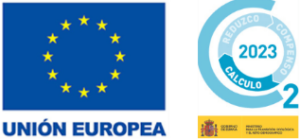The project we are reporting on this occasion combines two aspects of prime importance in the management of the integral water cycle: on the one hand, membrane technologies have been used for the desalination and adaptation of irrigation water to the cultivation of red fruits; at the same time, we have opted for containerized solutions that have provided our client with adaptability and versatility as additional advantages, while at the same time reducing manufacturing times.
Our client, a multinational leader in the production of red fruits with production centres in Spain, Holland, and the Maghreb region, has entrusted J. Huesa to adapt the irrigation water of 3 farms located on the African continent through the execution of a turnkey project consisting of the design, execution, construction, installation, and commissioning of 5 containerized solutions.
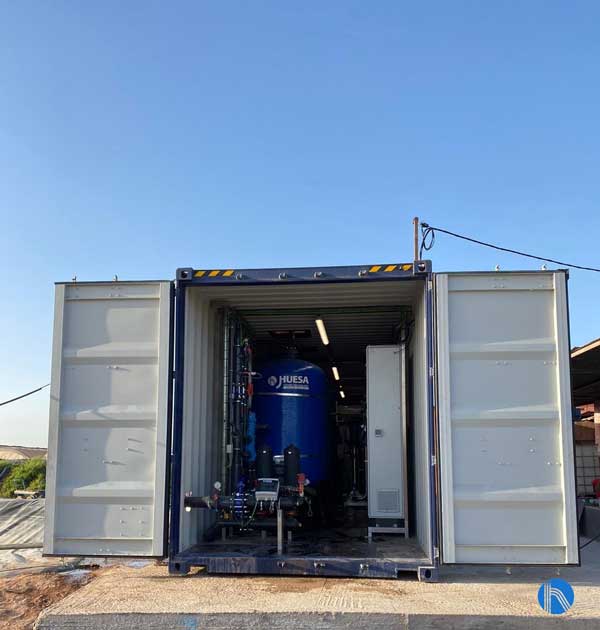
Water data and characteristics
The objective of this project has been to offer a global solution to the salinity of the water through the implementation of containerized reverse osmosis solutions that guarantee that the output water has a conductivity of less than 50 micro siemens and optimum quality that guarantees the improvement of fertigation performance.
After studying the initial conditions of the water and its distribution in the destination farms, the technical team of J. Huesa has opted for the manufacture of 5 containerized plants located inside 40′ High Cube containers, which provide the following daily flows to each of the farms: 360 m3, 1.120 m3 and 3.680 m3
| FARM 1 | FARM 2 | FARM 3 | |||
| Container 1 | Container 2 | Container 3 | Container 4 | Container 5 | |
| Inlet flow rate to RO | 25 m3/hour | 38 m3/hour | 38 m3/hour | 132 m3/hour | 132 m3/hour |
| RO conversion | 70 -75 % | 75 % | 75 % | 70 % | 70 % |
| Permeate flow rate | 15 m3/hour | 28 m3/hour | 28 m3/hour | 92 m3/hour | 92 m3/hour |
| Total outflow | 18 m3/hour | 28 m3/hour | 28 m3/hour | 92 m3/hour | 92 m3/hour |
| Total daily flow rate | 360 m3/day | 560 m3/day | 560 m3/day | 1.840 m3/day | 1.840 m3/day |
| Working hours | 20 hours/day | 20 hours/day | 20 hours/day | 20 hours/day | 20 hours/day |
Adopted Solution
In all the containers, reverse osmosis has been chosen as the technology for water desalination and, depending on the characteristics of the incoming raw water from each of the 3 farms to be treated, a pre-treatment consisting of a filtration system adapted to each specific case has been selected, so that:
– In farm 1, a ring filtration system followed by a two-layer filter was chosen. Large particles and impurities in the water are retained in the ring filter.
The water then passes through a sand-anthracite bilayer filter which is suitable for removing iron and manganese as well as turbidity. The main parameters controlling the filtration efficiency are related to the quality of the influent water (pH, turbidity, TOC, alkalinity, and temperature), the characteristics of the filter media (media type, grain size, distribution coefficient, age and general conditions) and the operation (filter load).
– On the second farm, a two-layer sand-anthracite filtration system has been installed, which is ideal for the removal of iron and manganese present in the water entering the system.
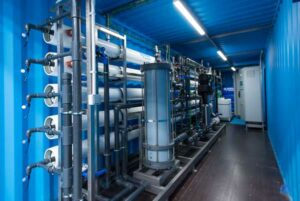
Detail of the interior of container farm 2
– In the last farm, a pre-treatment consisting of a ring filtration followed by a turbidex has been chosen to ensure a higher removal of suspended solids.
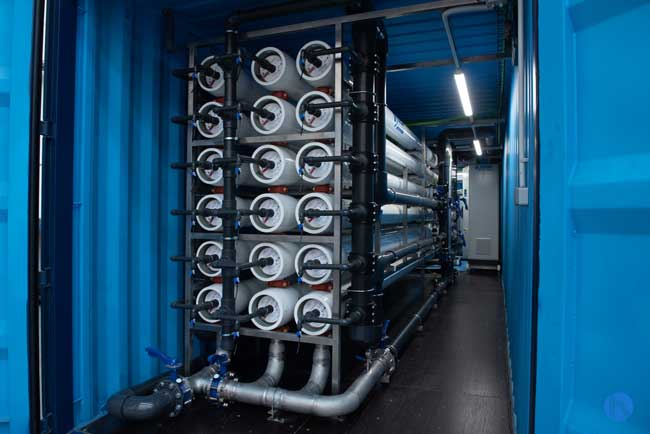
Detail of the interior of container farm 3
In all the farms, the filtered water enters the reverse osmosis skid where it is filtered through a safety pre-filter equipped with 5-micron pore cartridges that retain any possible leaks of particles and suspended solids.
Next, a reducer is dosed into the osmosis inlet water to eliminate hypochlorite from the water and to protect and guarantee the maximum efficiency of the reverse osmosis membranes, producing a bacteriostatic effect. An antiscalant is then added to prevent calcium and magnesium salts, among others, from fouling the membranes, which leads to a loss of treated water flow.
Reverse Osmosis
The reverse osmosis system is in 3+1 (18m3/h) / 3+2 (28 m3/h) / 12+6 (92 m3/h) configuration with a conversion rate of around 70 -75 % with a flow rate of 25, 38 and 132 m³ /hour, so that a permeate of 18, 28 and 92 m³ /hour is obtained throughout the working day. The installation is equipped with spiral wound membranes, made of polyamide, and specially designed for brackish water up to 8000 ppm and with the characteristic of working at low pressure. They are mounted in 300 psi pressure housings, made of coiled GRP
These membranes have a high chemical resistance, as they can work in a pH range of 2 to 13, which makes them very easy to wash and recover, as they can accept a wide variety of washing chemicals.
A flushing system has been installed in the reverse osmosis skid to ensure automatic cleaning of the membranes inside the tube. These cleanings are programmed from the touch screen, according to the needs of the operators and/or every time the plant is stopped. Additionally, a chemical cleaning or CIP system has been incorporated, which is produced semi-automatically when required by the customer, depending on the production requirements.
The system is equipped with two pumps, which have the following advantages:
- The power of the pump is higher supplying the osmosis plant.
- The pump with the lower installed power is used for flushing and chemical cleaning of the membranes.

Detail of high pressure pump
Instrumentation and control
The reverse osmosis plants are equipped with instrumentation and control elements (automatic valves, pressure switches, pressure transmitters, flow meters, conductivity, and pH meters, etc.) that are centralised in an electrical protection and control panel, located in the skid itself.
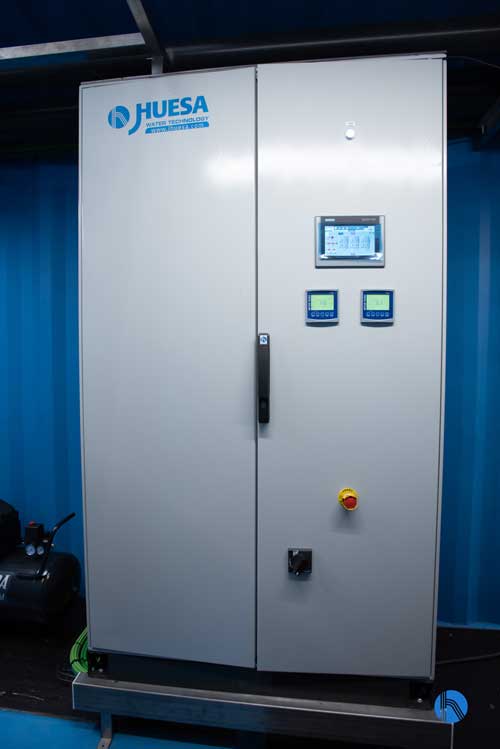
The panel also includes a programmable logic controller and a touch screen for the operation and configuration of the plant, and a router with Ethernet/4G connection for remote control of the equipment from any location. J. Huesa’s Instrumentation and Control team has designed the control panel so that it can be integrated into the customer’s SCADA system.
In this way, the electrical panels that control the treatment lines are equipped with remote communication systems so that their operation can be controlled without the need for on-site assistance.

If you liked it, you might be interested in our article on the:
Comprehensive solution for berries irrigation in Morocco

